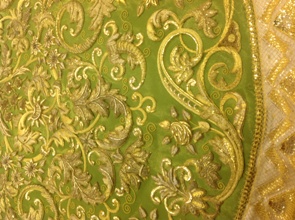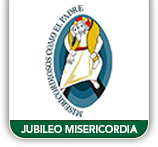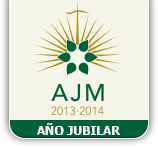The mantle of tissue: restoration

The mantle of green tissue embroidered in gold dela Stma. Virgen de la Esperanza is a work made between 1929 and 1930 in the workshop of Juan Manuel Rodríguez Ojeda, designer.
The Brotherhood of the Macarena decides, in June 1929, “make a cloak for the Virgen de la Esperanza, making every effort to the limit, which fills the desire of those who want to make offerings in fierce devotion to the Blessed Virgin.” The work is entrusted to Juan Manuel, who presents the picture in September of that year. The author welcomes the assignment as an opportunity in which “they filled their dreams with devotion to devote his whole life his later efforts.”
The Good Friday of 1930, Cardinal Ilundain, in the presence of the Mayor of Seville, blesses the new work in San Gil, then canonical dela Brotherhood headquarters.
Restoration
The mantle of green tissue is a valuable example of embroidered fabric by Juan Manuel Rodriguez Ojeda between 1929 and 1930.
This is a work of high regard for the Brotherhood of the Macarena and the city. It is therefore not only a piece of a treasure of sumptuary, but a fundamental part of a spiritual heritage, historical and sentimental. These values reside singularly in what it symbolizes for brothers and devotees of Ntra. Sra. de la Esperanza. It’s tangible and intangible heritage of Seville because he brings together art, religion and culture of this unique Andalusian city. And that makes this garment is monumental, for locals and foreigners, is invaluable.
One of the core values of the work of art is its conservation.
The inconsistency of the materials held the mantle, there has undergone several restorations throughout its history. The result of many interventions was distorting the original drawing of Juan Manuel Rodriguez Ojeda.
For recovery of the work has worked in an interdisciplinary, following a rigorous method of the study in depth of the work. Was analyzed and was diagnosed with high accuracy, to allow decision making with great merit.
The main objective of this intervention has been retrieve the original drawing. Made possible by the restoration graph made with a combination of digital and traditional techniques. This restoration was carried out by a small collection of old photographs, which appeared the mantle without any restoration and a template of the same size. Through a series of calculations are able to find out the actual size of the garment primitive. Once obtained these measures could restore the drawing of all the parts to restore its original design.
By tracking recolocaron old photographs are the original pieces in place respecting the original spaces between them. Thus was recovered Rodriguez Ojeda design.
Another important point was to get the fabric and the color tone with which the work was conceived. And finally, the restoration of the pieces in poor condition and therefore artisan finish work.
The restorative treatment performed in the mantle called the “tissue” of the Virgen de la Esperanza Macarena has followed a conservative and recovery according to criteria and methodology related to the international fabric restoration.
We started with a previous report of diagnosis was performed directly on the textile work and conducted a series of analyzes of materials (fabric base, metallic thread, sequins, etc..) To determine the most appropriate process before surgery has been conducted.
This process starts with an absolute respect for the original work created by Juan Manuel Rodriguez Ojeda between 1929-1930.
The materials used in all phases of mantle treatment have always been appropriate given the nature of this procession and functional textile work.
The technique of “past” is an intervention that is practiced where strictly necessary to allow the work of art, with connotations devotional or use, continues to fulfill the function for which it was created.
For this piece textile consider the desirability of a new “old” to a new tissue that was justified for several reasons:
First by the modifications undergone by the original drawing in design, it had completely altered his original composition created by Juan Manuel Rodriguez Ojeda.
Secondly by the poor condition in which he found the base fabric, the tissue, which in some areas had very fragile and faded.
And thirdly, the embroidery was very loose and lost numerous pieces thread implying reintegrating them and setting a new support to ensure their durability.
According to these general considerations we proceeded to the intervention of the mantle, which consisted of a very general cleanliness embroidered pieces for your front and back, correcting deformities, timely reinforcements, building seams, threads and fixing elements metal decoration, like himself, reinstatements in embroidered pieces.
Technical details of the restoration
Workshop of embroideries
Fernandez y Enríquez y Bordados de la Trinidad
Technical Monitoring Committee
Nieves María Concepción Álvarez Moro, Antonio Mañes Manaute, Gabriel Ferreras Romero, Andres Luque Teruel
Commission of the Brotherhood
Manuel García García Alvaro García Carranza, Pedro Bohorquez Jimenez , Fernando García Rivero, Pedro I. García Rivero, Miguel Ángel Fernández Almagro
Technical Advisor textiles
Araceli Moreno Montero.
Graphic Designer (drawing recovery mantle)
Rafael de Rueda Burrezo
Making metallic lace
José Espadero
Source of tissue
Casa Garin 1830 (Valencia)
Photographs
Archive for the Brotherhood of the Macarena, and Fernández y Enríquez , Miguel Ángel Fernández Almagro
Technical details of the work
PROPERTY
Real, Ilustre y Fervorosa Hermandad y Cofradía de Nazarenos de Ntra. Sra. del Santo Rosario, Ntro. Padre Jesús de la Sentencia y María Santísima de la Esperanza Macarena.
Basilica of Santa Maria de la Esperanza Macarena
TITLE OF WORK
Processional Manto called the “tissue” of the Virgen de la Esperanza Macarena
AUTHOR
Designer
Juan Manuel Rodriguez Ojeda
Embroiderer
Rodriguez Ojeda Workshop
DATE
Years 1929-1930
Materials and techniques
Support base fabric
“Tissue” in green silk with gold metal frame
Ornamentation
Embroidery superimposed on gold wire with decorative metal accessories
DIMENSIONS
511 x 460 cm.






